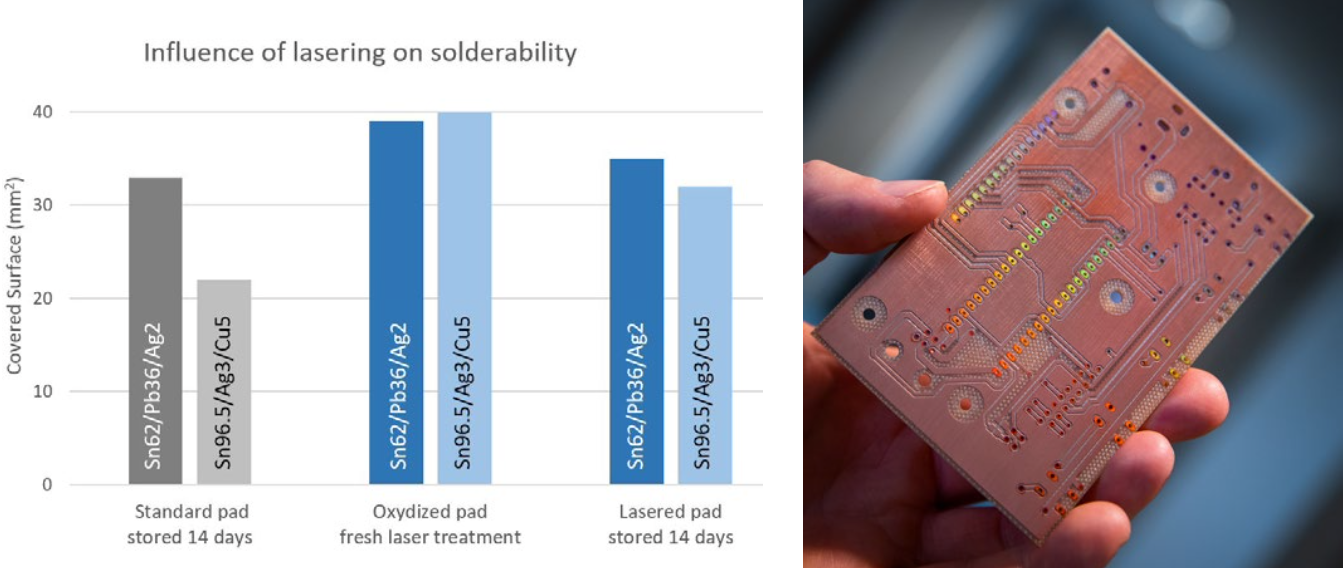Feb 14, 2020
Production: PCB with improved solderability
Physical Sciences, Electrical Engineering
- Stronger connection of components to PCBs
- Long term laser activation of solder pads
- Works for most standard materials
Your contact
Stephan Ottmar
- E-Mail:
- sottmar@baypat.de
- Phone:
- +49 (0) 89 5480177 - 37
- Reference Number:
- B79040
Factsheet
Download Tech Offer (PDF)Challenge
How to achieve permanent and strong solderability on printed circuit boards (PCB) connection points? The most common metallic materials used in PCB technology are copper and brass. Due to their high chemical reactivity, these metals quickly create a thin passivation layer. This passivation significantly degrades the quality of soldering and limits the shelf life of PCBs. Therefore, the PCBs are pretreated, e.g. gold-plated, additionally coated or chemically cleaned. That increases the complexity of the electronic component manufacturing process and causes higher expenses.
Innovation
Treating solder pads by ultrashort puls laser, the surface chemistry and morphology is modified in a way that improves the wettability of the solderpad. The laser treatment creates a periodic surface structure in the nanometer range. This enlarges the wettable surface area and simultaneously removes the passivation layer. The created nano structure generates a speric shine that is visible to the naked eye. That simplifies process control and monitoring of competitors.
Commercial Opportunities
- Stronger connection of the components, also applicable for gluing process
- Long term activation of connection pads - suitable to almost any type of pad
- Improved wettability enables lead-free solder (RoHS compliant!).
- Very high repeatability
- Usage of ultrashort pulse lasers - an established technology for cutting and drilling
- No solder resist lacquer required
- Applicable to modern multilayer PCBs, due to minimal material removal.
Development Status
The proof of concept was successful. The effectiveness of the invention was demonstrated. The current work on laser scanning strategies is aiming at improved process speed.


